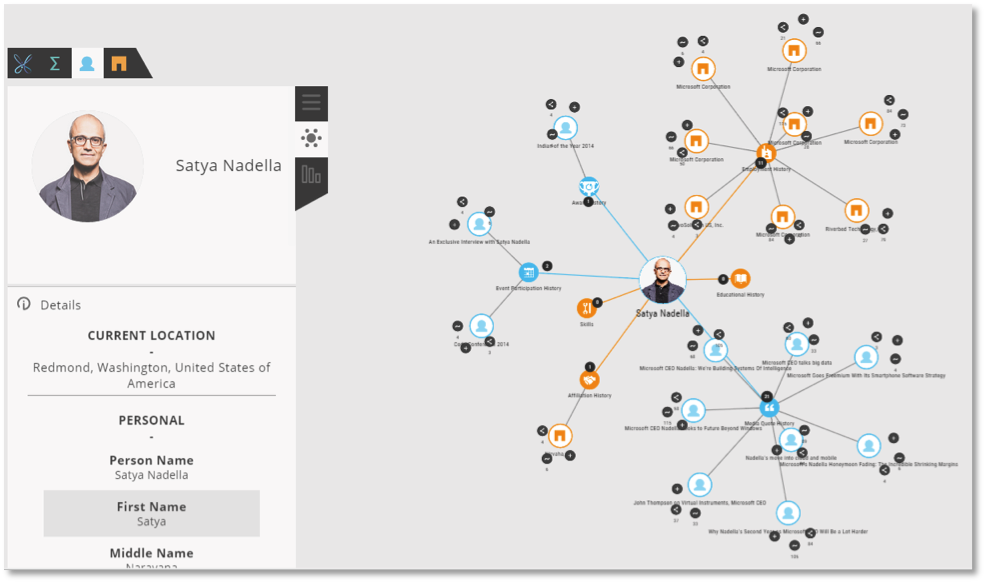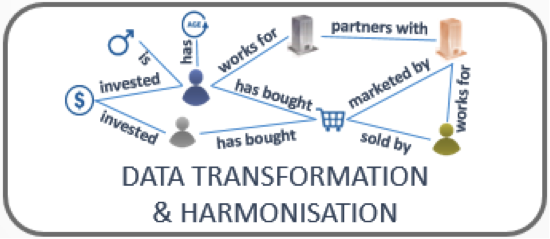360º Customer View: Nirvana or Fairyland?
For a while now, businesses of all sizes have understood that collecting and interpreting relevant data is essential. In understanding their customers, they can work towards continuous improvement and success, and identify new business opportunities. Whilst the technology exists to help businesses gather intricate data, the problem lies in interpreting it. To do so in a single view is the nirvana of marketing and effectively assists users in recognising the underlying relationships that may exist. Identifying specific and relevant connections will allow businesses to make appropriate decisions, take action, and improve their processes, product or service, and target marketing campaigns to achieve optimum results.
The Importance of Data
Data can help a business to understand its customers and their behaviour; their location, age group, preferences, lifestyle, and how and where they are using their product or service. Knowing where a business can improve efficiencies, refine service delivery, and cut costs will lead to higher productivity and an increased bottom line.
Exceeding customer expectations, pre-empting and delivering intuitive customer service, identifying what they could do better, and predicting future trends will give them that all-important edge over their competitors. A single view of the customer across all systems and interactions is seen as the answer to successful marketing, including the ability to provide targeted or personalised marketing campaigns, and timing product launches to achieve maximum impact.
How to Obtain a Single View
Customer information sits in various systems such as Customer Relationship Management (CRM), Content Management Systems (CMS), marketing automation, campaign management, financial systems, document management systems, and often many more. Over the last decade there have been many initiatives to integrate all these systems in order to obtain a single view of the customer, the vast majority of which have been complex, costly, and of little value in enabling better decision-making.
With this approach there remains the challenges of data duplication, incorporation of public data eg social media profiles, and being able to “know what you don’t know” The only data that can be surfaced with the integration approach is that which you need to specify and pre-configure in your reports. As more data points arrive in any of the systems they will not be evident until such time as the report is re-configured to do so.
The Problem with Establishing Relevant Data Relationships
All of this means that despite the integration of various elements such as CRM, CMS, Marketing Automation, and Campaign Management, businesses are struggling to obtain meaningful insights that they can easily interpret. Masses of data can lead to confusion, or at the very least a need for data scientists and analysts to process exactly what the results mean for a company in real terms! For many, a solution to integrating all systems containing customer data remains complex and expensive. Although the aim is to obtain a 360º view of the customer and business processes, companies are finding they are unable to achieve this and they are failing to interpret data effectively.
Semantic Processing
The answer lies in having a single data aggregation solution that employs semantic processing. Only with solutions that can mine the various data sources, recognise data duplication even when it is formatted differently; such as in instances where surnames and christian names are differently ordered, and link relevant data points, allowing a string of data to become something else entirely; does it provide meaningful insight from a single view. This allows a “thing” such as a human being, to be recognised; rather than just identifying a person or a customer as a mere character string.

Ulysses processes the information and creates customer profiles, allowing qualified professionals to understand customers’ interactions.
How Ulysses Can Help You Interpret Data
Latize is a Singapore-based company that specialises in translating data into business insights. Developed to interpret any data, Ulysses has the ability to mine the appropriate data from a business’s various systems, apply the semantic processing and linking required, and present real insights to business users. The internal systems can also be aggregated with publicly available data either open eg census statistics, or from social media.

Advantages include:
-
Putting data insights directly into the hands of the decision makers; the business professionals
-
Avoiding integration challenges and the resulting cost.
-
Reducing time to benefit by being able to respond immediately to all new data.
Businesses will be able to see links straight away, for example, when a customer takes a specific action or understand how they processed the transaction. This will go some way to explaining why a customer chose your product over another. In other words, understanding meaningful data relationships will enable you to recognise cause and effect in a business transaction or interaction. This way, you can gain real understanding of your customers and take appropriate action to improve processes that are falling short, in real time.
With Ulysses, businesses can gain valuable insights into their customers and processes. Improving their customer’s experience of their product or service and helping them to achieve and retain customer loyalty, stay relevant, and ultimately succeed is what our software is all about.
